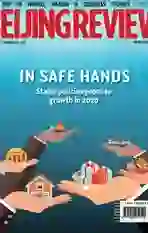A Convenient Entry
2019-12-27ByPeterMHerford
By Peter M Herford
Xi Jinping: The Governance of China is a massive compilation of the speeches, writings and more importantly, the philosophy of a difficult concept: socialism with Chinese characteristics.
My advantage is that I taught journalism at Shantou University in the southern province of Guangdong from 2003 to 2013, a period of growth unique in the history of nations. Chinese GDP grew at 10 percent per year and more. I lived and worked in many countries from France, Croatia and Portugal in Europe to China and Viet Nam in Asia. In China I experienced the transformation of a society, a nation, and a culture at a pace never before seen that began in 1949 when the Communist Party of China (CPC) led the newly founded Peoples Republic of China(PRC) on a continuing journey.
Modern China is a work in progress, and the two volumes of the book reflect the evolving concepts and ideas that Chinas current president and the Party he leads bring to their unique task. Much has been written and pondered about Xi Jinping Thought on Socialism with Chinese Characteristics for a New Era, the ideas and concepts that Xi brings to his tenure. These two volumes give scholars as well as those interested in how China develops a useful, convenient, but also challenging entry into the mind of the countrys leader. Volume I published in 2014 begins in 2012 when Xi took on his post as general secretary of the CPC Central Committee with the 18th National Congress of the Party.
Volume I deals with the broad issues that the Party faced when Xi took office, from the definition of socialism with Chinese characteristics to the goals of economic development, relations with other countries large and small, and “one country, two systems.” The ideas that Xi brought in his first years in office are a window to the direction of the country since then.
Volume II begins in the latter part of 2014 and takes us to 2017. Chapter Ones definition of socialism with Chinese characteristics evolves with the addition of the Chinese dream. A moderately prosperous society in all respects is an interesting window on how Xi sees the state of Chinese development as the economy matures.
In Chapter Six, between October 2015 and January 2016, Xi introduces his vision of new development concepts as a guide to the countrys development, divided into a deeper understanding of those concepts and ultimately, the implementation of new concepts.
Reflecting further the changes since Xi took office, economic development becomes the new normal of economic development. A future volume might further deal with the concept of economic development as China has lived it for more than 40 years. This uninterrupted development is an example of growth that no economist ever envisioned. Some economists have written that “it cannot be done” at the rate and pace that China has produced.
It often strikes me that the Chinese leadership challenge is unique both in terms of size and pace of development. There is no model to follow, no historical precedent as a guide to future growth. This raises the question of whether, in economic terms, past experience has any meaning. Chinas leaders cannot go to a school of thought or a precedent for guidance. They must invent and conceptualize as they go in one sense and yet also achieve the goals they set for the nation in every five-year plan.
The chapter on socialist democracy introduces a concept little understood outside China where the assumptions made for a socialist society often reflect the old Soviet model that was never applicable in China. The one on cultural confidence takes on the issues raised in dealing with a culture that is 5,000 years in the making in one sense and yet is as new and changed as todays youth. This struck me particularly as I experienced the struggles many of my students face in building the bridges from their modern digital world to the traditional analogue values of their all-important families.
Volume II adds the Belt and Road Initiative that Xi developed and is an ongoing vision that defines the countrys extended development beyond her borders.
The chapter titled Chinas Diplomacy as a Major Country helps define the growth that has placed China high in the international hierarchy of nations in the few years since Volume I.
Volume II ends on a vision that may help define a level of optimism that can only be hoped for: toward a community with a shared future for humanity.
As 2019 transitions to 2020, it will be interesting to see how the governance of China under Xi evolves toward what may become Volume III and more.
